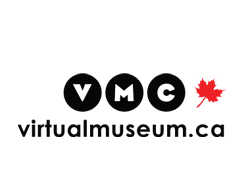Home | Major Sporting Events | Brier
The Brier 1927-1979
PreviousNext
The Canadian men's curling championship, known as the Brier, was first held at the Toronto Granite Club in 1927. Featuring a round-robin competition intended to bring together qualifying representatives from different parts of Canada in a spirit of neighbourly sportsmanship, the event was originally sponsored by the Macdonald tobacco company. The Brier's name was taken from a brand of pipe tobacco that contained a heart-shaped silver plug which was inserted with a purple plastic heart. This inspired the prestigious purple heart patches Brier competitors later wore that was and still is the symbol of a provincial/territorial men's champion. The silver heart plug was symbolic of the silver metal crest applied to the Brier Tankard each year with the name of ever winning team member engraved.
Originally intended to unite Eastern and Western Canada, the first Brier featured only eight teams representing New Brunswick, Northern Ontario, Nova Scotia, Ontario, Quebec and Saskatchewan and the cities of Toronto and Montreal. The next year Alberta and Manitoba were represented in the championship, followed by British Columbia and Prince Edward Island in 1936. By 1932 the Brier no longer featured teams representing cities, although it continued to be held annually in Toronto until 1939. Beginning in 1940, the Brier became a truly national sporting event, travelling to different host communities across Canada every year. Continuing to work towards uniting Canada from coast to coast, in 1951 Newfoundland achieved provincial representation in the Brier, and by 1975 the event also included a team representing the Yukon and Northwest Territories.
Even as competitors vied for the Brier Tankard trophy that would proclaim them national champions, the Brier was from the beginning a lively social event for spectators and participants from across the country. Host communities also seized the Brier to showcase regional attractions. After 1946, advances in communication technology led to increased media coverage that further popularized the event, reaching national audiences first in the crackling air over the radio with the Canadian Broadcasting Corporation, then on television in a variety of formats from the 1960's onward.
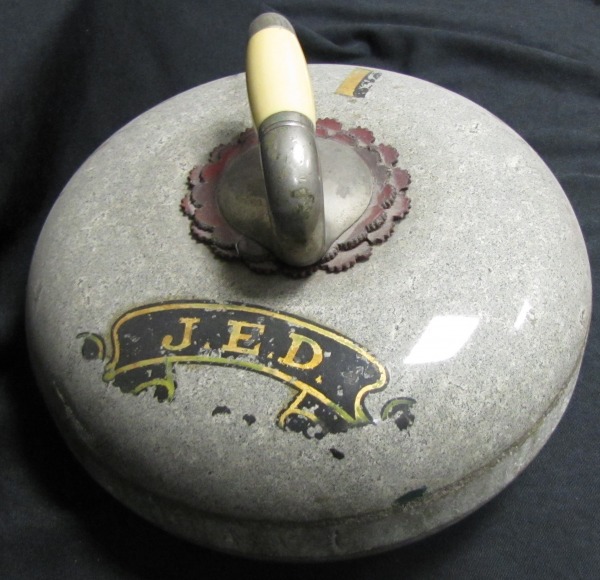
The Halifax Curling Club won the inaugural Macdonald's Brier in 1927. This curling stone used by lead James E. Donahue (JED) is made from granite from the Aisia Craig quarry in Scotland.
Collection: Nova Scotia Sport Hall of Fame
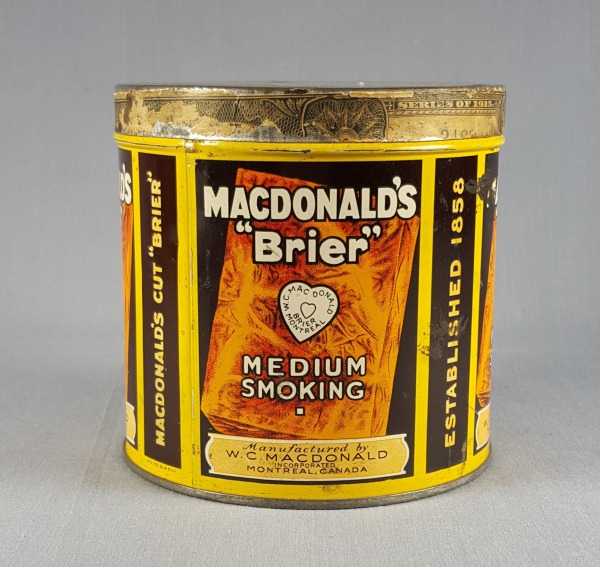
The Macdonald Tobacco Company was the first sponsor for the event. The silver heart plug found inside was referred to as the "heart of the tobacco".
Collection: Canada's Sports Hall of Fame

When the Brier started in 1927 eight teams vied for the Championship. Today each province and territory vies for a place among the 12 competing teams, showcasing the best of the best, in a sport that demands focus, passion and a competitive edge.
Collection: Canada's Sports Hall of Fame
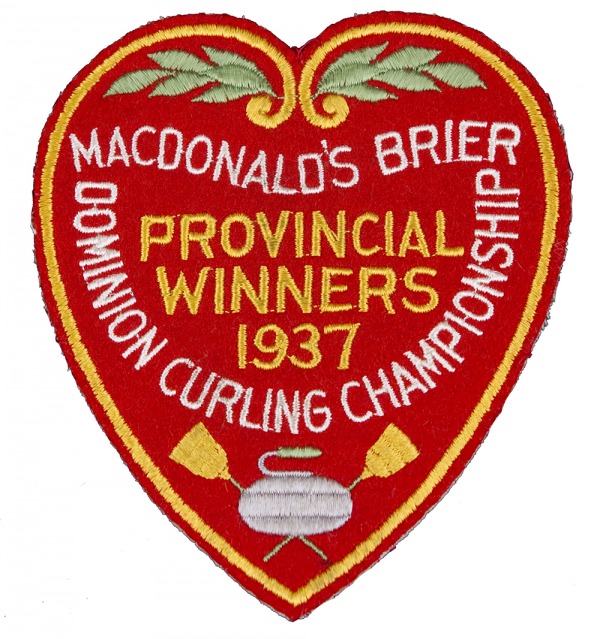
The heart-shaped crest has become emblematic of curling excellence in Canada. It is awarded to each provincial champion, denoting participation in the Brier. Originally red the colour changed to purple in 1940.
Collection: Royal Alberta Museum, Western Canadian History
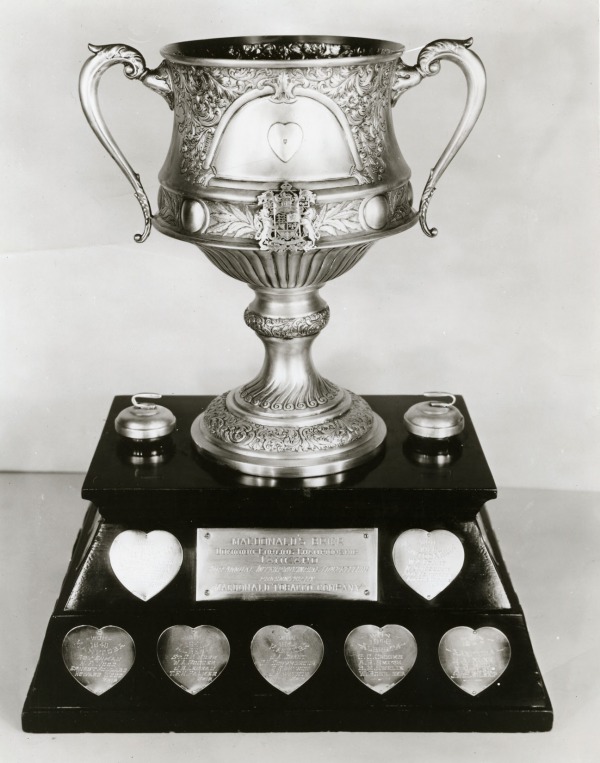
The Macdonald Tobacco company first awarded this trophy to Manitoba for an annual curling competition. Handcrafted in England, the Macdonald Tankard became the official trophy for the Brier from 1927 to 1979 when Macdonald withdrew its sponsorship and the trophy was retired. It has since been reactivated.
Collection: Canada's Sports Hall of Fame
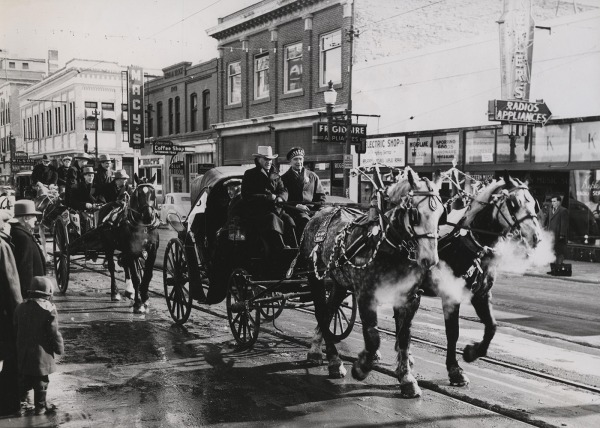
Cities across Canada vie for the honour of hosting the Brier. In 1948 Calgary celebrated the championship with a Western theme, which included a horse-driven parade down the street to the arena. Each city adds its own unique character to the Brier.
Collection: Canada's Sports Hall of Fame

Don Twa from Whitehorse competed in a joint Yukon/Northwest Territories entry at the 1975 Brier. He went on to post the best record for the YK/NWT when he tied for second place with Alberta. Newfoundland & Labrador started playing in 1951 and won its first Brier in 1976. Northern Ontario has played since the Brier's inception.
Collection: Private Collection: Warren Hansen
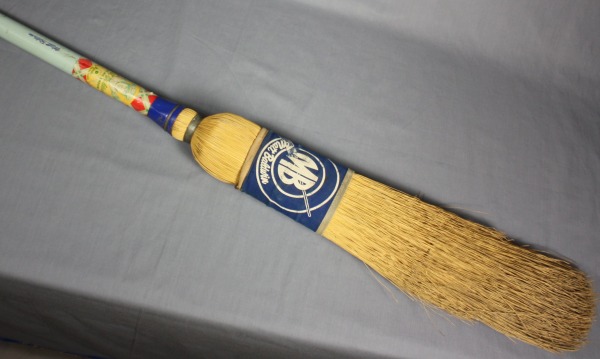
The corn broom was used mainly by North Americans. The push broom was introduced from Europe in the 1970's. It was more efficient, never left the ice surface, was less taxing on the sweeper and did not leave a mess behind. The broom produced under Matt Baldwin's name promised sweeping satisfaction.
Collection: Private Collection: Matt Baldwin
Previous Next


